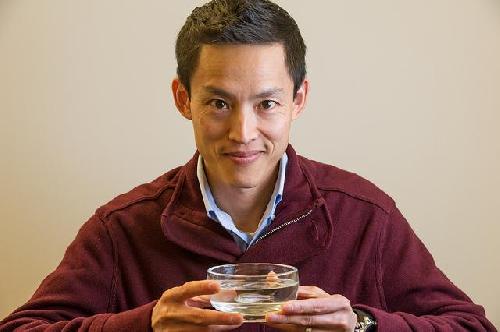BAR HARBOR, MAINE - The MDI Biological Laboratory has announced new discoveries about the mechanisms underlying the regeneration of heart tissue by Assistant Professor Voot P. Yin, Ph.D., which raise hope that drugs can be identified to help the body grow muscle cells and remove scar tissue, important steps in the regeneration of heart tissue.
Heart disease is a leading cause of death in the western world. Yin is using zebrafish to study the regeneration of heart tissue because of the amazing capacity of these common aquarium fish to regenerate the form and function of almost any body part, including heart, bone, skin and blood vessels, regardless of their age. In contrast, the adult mammalian cardiovascular system has limited regenerative capacity.
"Although zebrafish look quite different from humans, they share an astonishing 70 percent of their genetic material with humans, including genes important for the formation of new heart muscle," Yin said. "These genes are conserved in humans and other mammals, but their activity is regulated differently after an injury like a heart attack."
 Voot P. Yin, Ph.D., with zebrafish: The MDI Biological Laboratory has announced new discoveries about the mechanisms underlying the regeneration of heart tissue by Assistant Professor Voot P. Yin, Ph.D., which raise hope that drugs can be identified to help the body grow muscle cells and remove scar tissue, important steps in the regeneration of heart tissue. The discoveries were made through the study of zebrafish, which share 70 percent of their genes with humans. Credit: MDI Biological Laboratory
Voot P. Yin, Ph.D., with zebrafish: The MDI Biological Laboratory has announced new discoveries about the mechanisms underlying the regeneration of heart tissue by Assistant Professor Voot P. Yin, Ph.D., which raise hope that drugs can be identified to help the body grow muscle cells and remove scar tissue, important steps in the regeneration of heart tissue. The discoveries were made through the study of zebrafish, which share 70 percent of their genes with humans. Credit: MDI Biological Laboratory
The MDI Biological Laboratory, located in Bar Harbor, Maine, is an independent, nonprofit biomedical research institution focused on increasing healthy lifespan and harnessing our natural ability to repair and regenerate tissues damaged by injury or disease. The institution develops solutions to complex human health problems through research, education and ventures that transform discoveries into cures.
Yin and other scientists conducting research in the institution's Kathryn W. Davis Center for Regenerative Medicine study tissue repair, regeneration and aging in a diverse range of organisms that have robust mechanisms to repair and regenerate tissue.
Yin's recent work is a continuation of earlier work identifying an experimental drug, ZF143, that accelerates the rate of tissue repair in damaged heart and limb tissue. He is the co-founder and chief scientific officer of Novo Biosciences, a for-profit spinoff of the MDI Biological Laboratory whose goal is to realize the therapeutic potential of ZF143 and other drugs that speed tissue healing and stimulate the regeneration of lost and damaged body parts.
"Our goal is to move scientific discovery from the laboratory into the clinic through our for-profit spinoff, Novo Biosciences, as well as other commercial ventures," said Kevin Strange, Ph.D., president of the laboratory and co-founder with Yin of Novo Biosciences. "It is our hope that Dr. Yin's research will lead to additional potential therapeutic agents like ZF143 to reactivate mechanisms for the repair and regeneration of damaged heart muscle tissue in humans."
Yin's research has identified the role of a microRNA, miR-101a, a central genetic regulator, in stimulating both the growth of heart muscle cells and in removing scar tissue. He describes these functions as the "yin and yang" of heart tissue regeneration since scar tissue - which serves as an immediate "Band-aid," but prevents the heart from beating properly over the long term - has to be removed for regeneration of new heart muscle tissue and restoration of function to occur.
The research was published in the journal "Development," a prestigious journal of developmental biology. Co-authors are Megan Beauchemin, Ph.D., and Ashley Smith.
"The concept of organ regeneration fascinates the public, which tends to view it as science fiction," Yin said. "But the zebrafish heart robustly regenerates missing or damaged tissue in as little as 30 to 60 days. Humans share the same genetic material: the same genetic program resides in each of our cells. Our goal is to understand how zebrafish do this so we can unleash our own repair mechanisms through the reawakening of our dormant genetic codes."
Heart disease accounts for approximately 17 million deaths per year. Of these, an estimated 7.4 million are due to coronary heart disease, the most common type of heart disease. In the United States, about 720,000 residents experience a heart attack annually, which means that hundreds of thousands of heart patients are living with the disabling complications of heart disease who could benefit from therapies to repair and regenerate damaged heart tissue.
With a clearer understanding of the genetic circuits leading to regeneration, Yin and his team will be able to develop additional drugs that allow the activity of these circuits to be controlled so that heart regeneration can be stimulated in patients who have suffered a heart attack. Yin's research also has implications for the treatment of other diseases involving muscle damage, including muscular dystrophy.
source: Mount Desert Island Biological Laboratory